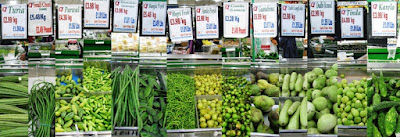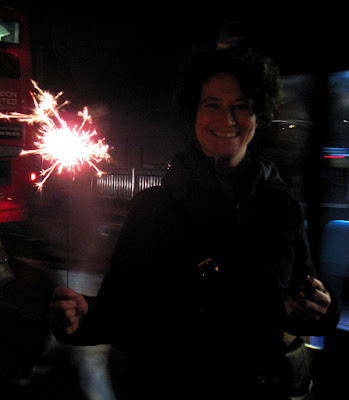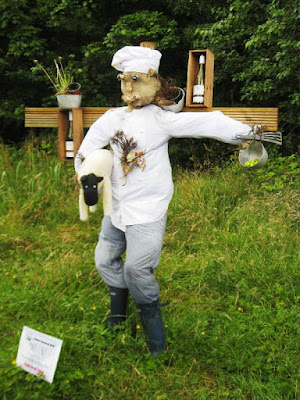 |
| Coombe Abbey, June 2015 |
In
part 1 I wrote about the basics of how a pump works in comparison with using insulin pens and MDI - multiple daily injections. Now we come to how I got on with the course, and some fancy features of the pump in more detail.
Tube or Not Tube?
The course I attended was run by a company whose pump delivers insulin to the cannula via a tube. Other pumps, like Mr M's, combine the pump and cannula in one unit and you stick the whole lot onto your body and control it from a separate handset. The pumps that we were using also had a handset that duplicated the interface on the pump and communicated with it via Bluetooth. The benefit of this approach is that when you administer insulin you can leave the pump in whatever inaccessible place you have stashed it - such as
in your pants. Some pumps don't have this convenience, so you have to retrieve the actual pump in order to deliver insulin. You probably don't want to be fishing down the front of your trousers at the dinner table so your options for carrying the pump are more limited, and slinky dresses present a similar problem.
 |
| Here's a slightly blurry picture - the handset is on the left, and the pump with its tube is on the right. |
There are a few different cannula types to choose from, but they all require you to stick a needle into your body. We were given the opportunity to try two types, one inserted manually and one using an insertion gadget, and I was very surprised that I hardly felt the insertion at all. You load the insulin into the pump either using a pre-filled cartridge or by filling the reservoir yourself with a syringe and a vial of insulin. Then you have to prime the tubing to fill it with insulin, connect the tube to the cannula and fill the cannula with insulin, and then it's all set and ready to go. The whole process takes a few minutes, which isn't long, but I imagine could be very annoying if it needs to be done at an inconvenient time.

Obviously I wasn't delivering any insulin through the cannula (I produce my own very nicely, thank you), and we weren't given strips to test our blood glucose. But we were given a pump to wear and encouraged to go through the process of estimating carbohydrate and programming a dose of insulin using the pump or its handset. This is something I'm pretty familiar with given that I've been interested in diabetes for some time above and beyond what the job requires.
12 hours connected to a pump
At dinner we were encouraged to estimate the carbohydrate portions and pretend to bolus insulin using the pump. I tend to forget that most normal people don't do this every now and again just for fun - for some it was actually the first time! We shared our guesses about the carbs in various dishes, and established the kind of variation in estimation that you get when there's no correct answer. But then one of the most enthusiastic pump reps suggested that to try and estimate carbs more accurately we should ask the chef, and then went as far as to haul the chef out of the kitchen to talk to us.
I had a problem with this. "Do you expect the chef to be more skilled at carb counting than a room full of diabetes healthcare professionals, including Diabetes Specialist Dietitians?" I wanted to know. Undaunted, the rep persisted in asking the chef his opinion on the goat's cheese tartlets. The chef obligingly came up with a figure. I continued to make myself unpopular. "What are you basing that figure on?" I asked. "Is it the pastry? How much does the pastry weigh?"
At this point there was a murmur from the room. My questions were perceived as 'a bit much' by some of the other delegates, and sympathy was building for the chef. He was prepared to take me on, though. He said, "I'm basing it on the pastry, and the cheese, and the onion."
"The cheese? But cheese doesn't contain any carbs..."
At this point the enthusiastic pump rep proposed a vote of thanks to the chef, we all complimented him on the delicious spread, and he was hastily bundled out of the room, poor man. Nobody wants a smartarse Dietitian making a chef look like he doesn't know his carbs from his elbow.
Pump features
Lots of the two-day course covered the range of sophisticated features available on this particular pump, many of which are possible on most pumps on the market. These features are designed to help the user decide on the dose of insulin, and deliver it over a period of time rather than in a single injection.
There are quite a number of factors that influence the delivery of insulin in addition to the quantity of carbs eaten - the type of carbohydrate (sweet, starchy, liquid) what is being eaten alongside the carbs (especially fat, protein and fibre content of food and drink), the size and duration of the meal (quick breakfast before work or three leisurely courses at a dinner party), time of day, ambient temperature, whether the user is ill or well, the menstrual cycle, the site of the cannula, planned activity or alcohol, recent past activity or alcohol, whether there has been low blood glucose in the last 24 hours... the list goes on. All of this should be considered before you can even take a bite. It's a massive overhead for something that most of us take for granted as we tuck into our food without a second thought.
The help that most pumps give is confined to the maths involved in applying a ratio of insulin to carbs and adjusting it for the factors given above. The 'bolus advisor' comes up with a suggested number of units of insulin to be injected, which the user can accept or overrule. Then the user can decide how those units should be delivered.
There are three different ways to deliver the insulin. A standard bolus just squirts all the insulin required over a few seconds, much as an insulin pen or syringe would. An extended bolus allows you to spread out the insulin over a longer period of time. You can have it delivered at a constant rate for the whole period of time you select, or you can combine the standard and extended bolus and specify 30% (or 50% or 70%) to go in straight away as a standard bolus and the rest extended over however many hours you want. This type of 'multiwave' or 'dual wave' bolus is for foods that are digested quite slowly (low glycaemic index or low GI), usually because a large amount of carbohydrate is combined with a lot of fat and protein. Fish and chips, pizza, pasta in a cheesy or creamy sauce and curry are the main culprits.
The third insulin delivery option is the super bolus. It's used less than the other bolus types, and is a more extreme version of the multiwave bolus for food that is digested quickly (high GI). It's a little bit complicated because it involves the background insulin that is usually not included in calculations around food. Remember, the background level is programmed automatically to feed insulin dripwise over 24 hours. For these high GI meals (think candyfloss, Halloween or birthday party) you calculate the insulin needed for the food, then you add on the amount of insulin that you'd be getting from background insulin for the next 2 (or 3) hours and give that whole amount up front. Then you turn off the background insulin for 2 (or 3) hours. It gives you a big 'kick' of insulin with the sugary food then turns it off so you don't go low later on.
Other features that may be used more often than the different bolusing options are the different basal profiles and temporary basal rates. The basal insulin is the background 'dripwise' insulin, and the rate it is delivered is programmed into the pump as a 'basal profile'. This generally varies hour by hour, giving a little more insulin in the early hours of the morning for example, when blood glucose naturally rises as the body prepares for waking. You may have different basal profiles if you work different shifts, for example, or if your routine and pattern of activity varies between weekdays and weekends. Temporary basal rates (TBR) can be handy if you are ill and you need more insulin, or if you are exercising and you need less. A TBR is selected for a number of hours rather than for a whole day.
Conclusions
Writing this pair of posts has reminded me just how much is involved in managing diabetes day-to-day, with or without a pump. It's a lifetime's work - I have left out far more in these 'essays' than I have been able to include. For example, how do we decide on how much background insulin to program into the pump, or how much to give for food? How do people manage sport or illness or pregnancy or holidays or airports? What if you get it wrong, or drop the pump or handset in the toilet, or run out of insulin or needles or test strips? What if you can't do maths, or read, or you live in prison, or are homeless? These are all matters for other blog posts on other days.
I complained to the last group we had for structured education that they had an advantage over me, because I can't experiment and test out my dietary theories. I can estimate carbs in meals and suggest matching insulin doses and bolus types as much as I like, but I will never know if I am right. Obviously they showed no sympathy (and I expected none), but having diabetes is a process and a lifestyle and a challenge as much as a diagnosis, and one that takes a lot of effort and commitment to master.
A pump doesn't cure diabetes, but it can help. There are other technologies being developed including the holy grail of the 'Artificial Pancreas' which is intended to match the natural pancreas even more closely, but even that won't detect blood glucose or deliver insulin in the non-diabetic physiological manner. Glucose-detecting contact lenses or wrist-watches have been proposed, but these are all sticking plasters on the gaping wound that is Type 1 diabetes, and we are nowhere near any sort of cure, or even identifying a cause.

































